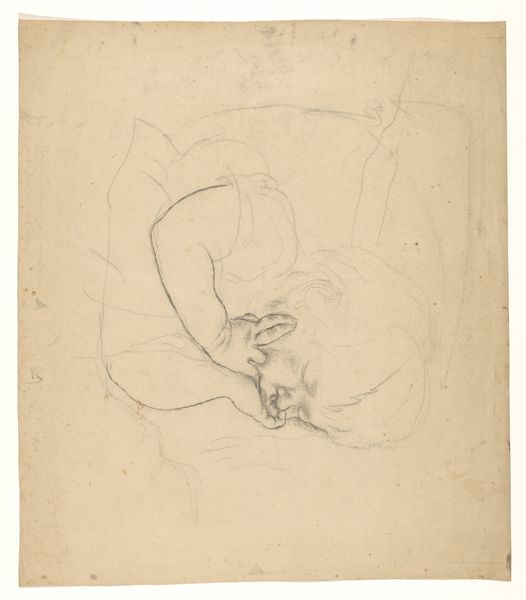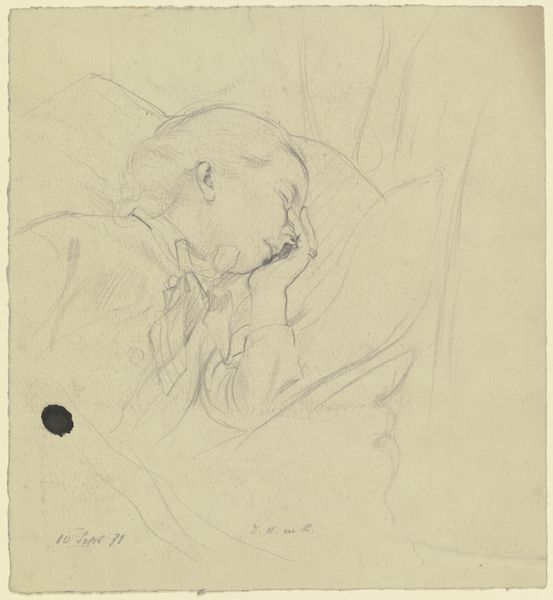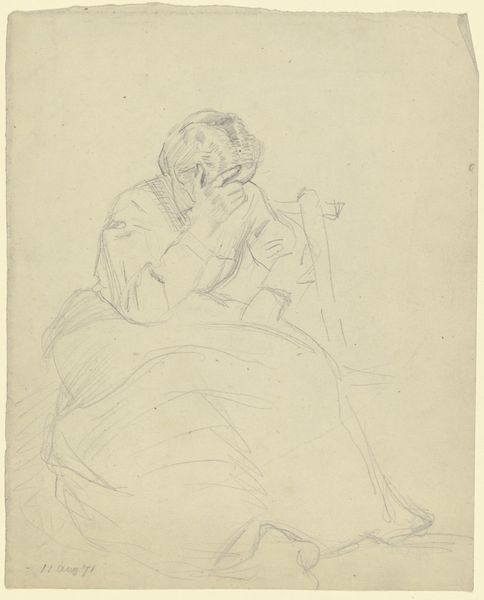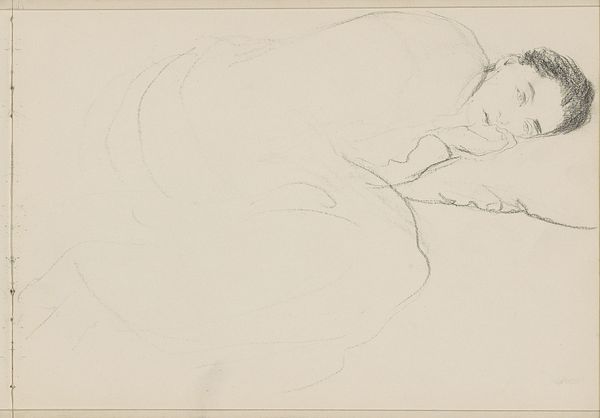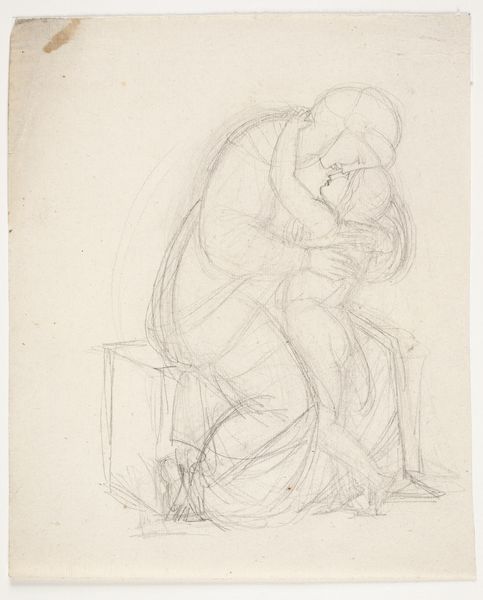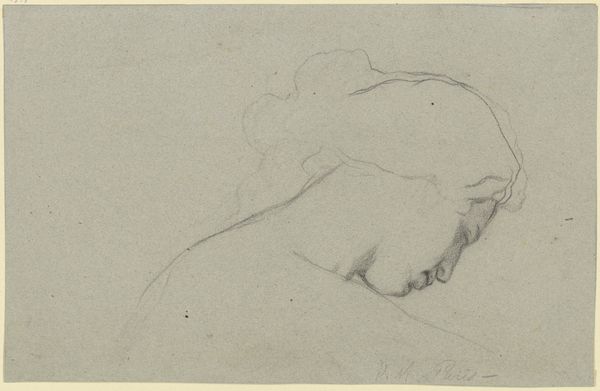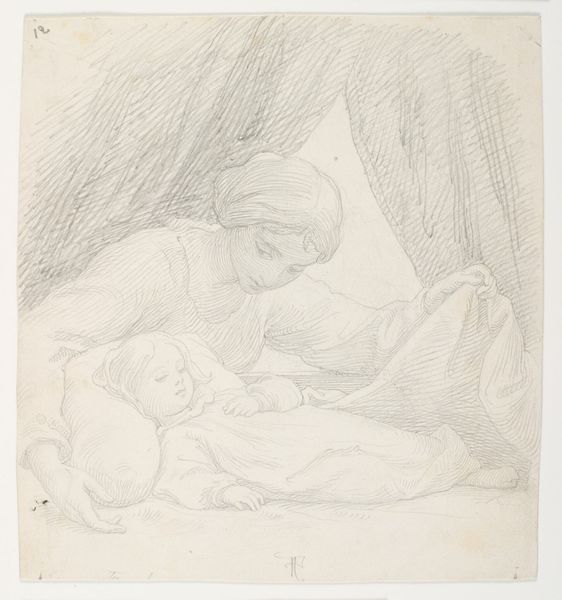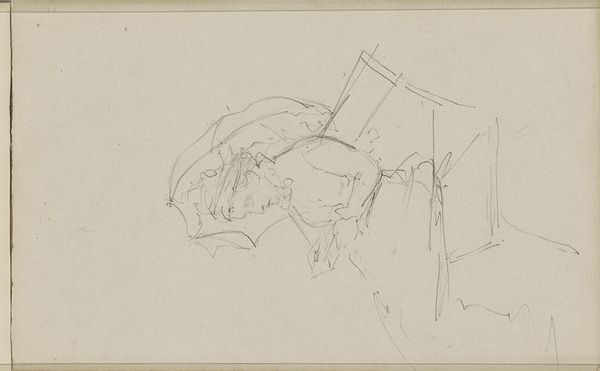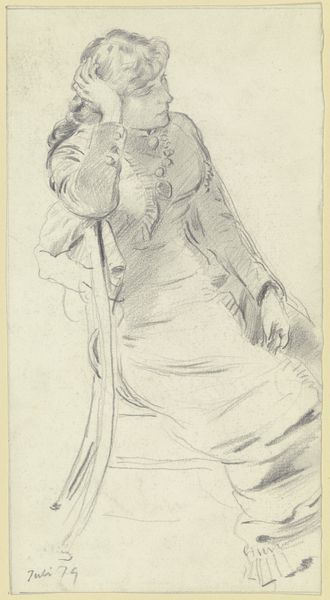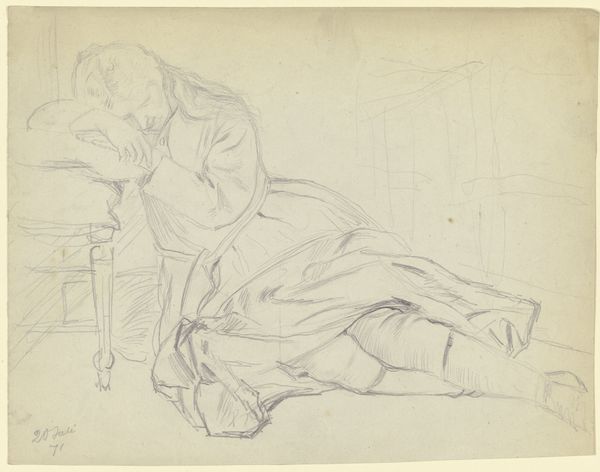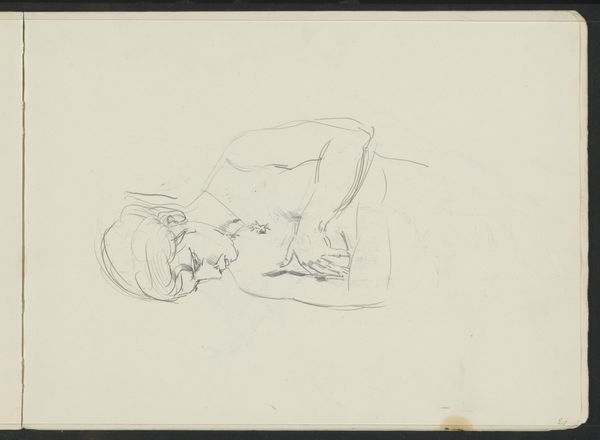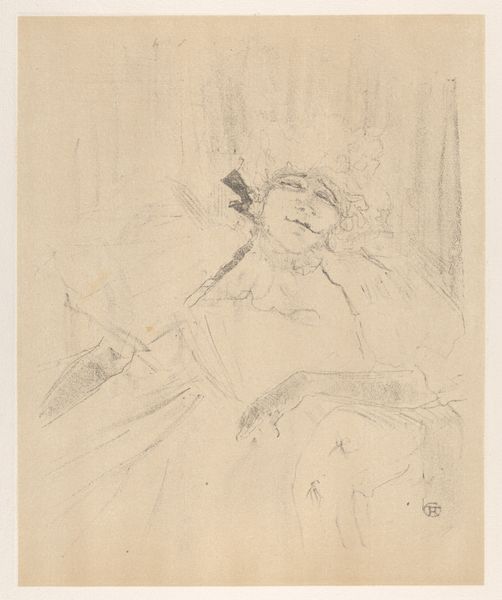
Sitzernder Mann, den Kopf aufgestützt, die Linke nach der Hand der Frau ausstreckend, aus _Trost (Abschied)_ c. 1856
0:00
0:00
drawing, paper, chalk
#
drawing
#
amateur sketch
#
light pencil work
#
16_19th-century
#
pencil sketch
#
paper
#
personal sketchbook
#
german
#
ink drawing experimentation
#
pen-ink sketch
#
chalk
#
sketchbook drawing
#
portrait drawing
#
pencil work
#
sketchbook art
Copyright: Public Domain
Curator: Today, we're looking at "Sitzernder Mann, den Kopf aufgestützt, die Linke nach der Hand der Frau ausstreckend, aus _Trost (Abschied)_," a drawing by Victor Müller from around 1856. Editor: Wow, that title is a mouthful, isn't it? Right away, though, this feels incredibly intimate. It's almost painful, the way the figure is slumped, head in his hands. There's so much weight, and sadness, visually pulling down on the scene. Curator: Indeed. Müller was exploring the theme of consolation, or Abschied, in this series, and the image resonates deeply with grief. You see it throughout art history—this gesture of burying one’s face is a universal symbol of sorrow, isn't it? We’re viscerally aware of the body as a landscape of loss. Editor: Absolutely. And the tentative reach for the woman's hand... it’s heartbreaking. There's a connection, but it's strained, fragile. Is he reaching for comfort, or is it a final goodbye? It makes you want to fill in their story yourself. The lack of sharp detail somehow heightens that feeling. We're invited to project. Curator: I agree completely. Note, too, the simplicity of the medium—chalk and paper. It lends a sense of immediacy. This wasn't a grand commission, but something more private, an exploration. This mirrors its psychological character, as art works through feelings that resist easy expression. Editor: It does feel like we're peering into Müller’s private sketchbook, witnessing a very raw emotion unfold. I’m getting such strong echoes of Romanticism, but with an interesting hint of, dare I say, something almost modern in its stark portrayal of loneliness. There’s a vulnerability on display here. Curator: And consider the cultural context. German Romanticism in the mid-19th century grappled intensely with themes of loss, longing, and the individual's emotional landscape. Images carry such weight, referencing earlier moments of mourning and the symbolic language of love, loss, and the body in crisis. Editor: I never expected a quick sketch to punch me in the gut so hard, but that's what great art can do, I suppose. Curator: Precisely. A reminder of the potent emotional power, in even the simplest lines.
Comments
No comments
Be the first to comment and join the conversation on the ultimate creative platform.
